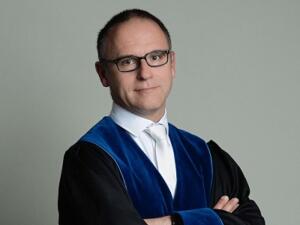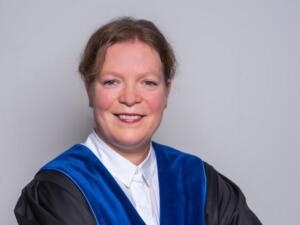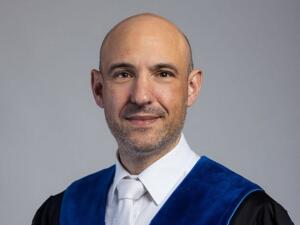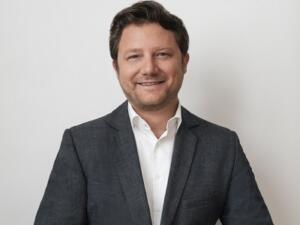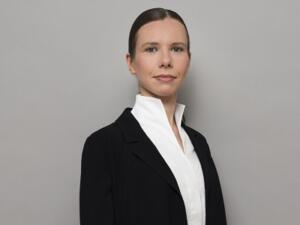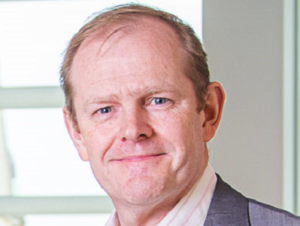UPC battle between 10x Genomics and Curio Bioscience moves to next stage
The patent dispute between 10x Genomics and Curio Bioscience entered a new phase today with an oral hearing on the merits. The proceedings delved deep into the technology, despite the patent's validity not being challenged.
13 May 2025 by Konstanze Richter
US company 10x Genomics alleges that competitor Curio Bioscience has infringed its European patent EP 2 697 391, which protects a method and product for localised or spatial detection of nucleic acid in a tissue sample.
In May last year, the Düsseldorf local division granted 10x Genomics a PI against Curio Bioscience. The judges, led by presiding judge Ronny Thomas, found that Curio infringed claim 14 of EP 391, but not claim 1. Consequently, Curio was barred from selling devices infringing claim 14 in France, Germany, and Sweden. However, 10x Genomics had to deposit security for legal costs to enforce the injunction.
Today’s hearing on the merits took place before the same panel as in the PI proceedings. Presiding judge Ronny Thomas, legally qualified judges Bérenice Thom and Andràs Kupecz, and technically qualified judge Martin Schmidt will rule on the case (Case ID: UPC_CFI_140/2024).
- Ronny Thomas
- Bérénice Thom
- András Kupecz
- Martin Schmidt
At the plaintiff’s request, judge Thomas set the dispute value at €3 million, higher than in the PI proceedings. Meanwhile, Japanese biotechnology firm Takara has acquired Curio Bioscience.
Under the microscope
10x Genomics still maintains that Curio’s Seeker Spatial Transcriptomics Kits infringe both claim 14 and claim 1 of the patent.
Bardehle litigator Kerstin Galler, representing 10x Genomics, argued that technical and functionality-based arguments had dominated the PI proceedings. She contended that case law from national courts and the UPC Court of Appeal supports looking beyond a purely literal interpretation of claim wording, taking specifications into account. In this case, she argued, the two embodiments of claim 1, specified in claims 7 and 9, were crucial to the question of infringement.
Curio countered that its product clearly differs from EP 391’s patent claim in one key aspect.
According to claim 1 of the patent, the method provides an array comprising a substrate on which multiple species of capture probes are directly or indirectly immobilised such that each species occupies a distinct position on the array. Defining an array as an “ordered arrangement of parts”, Curio argued that a person skilled in the art would regard an ordered structure of the probes as necessary. However, in the Curio Seeker tile there is no array and thus no ordered structure. Therefore, the company argued, there can be no infringement.
The court will publish its decision on 16 June.
Language barrier overcome
The hearing on the merits was conducted in English. During the PI proceedings, Curio Bioscience had successfully applied to change the language from German to English under Article 49(5) UPCA. Curio argued that both parties are US companies, English is the language of the patent and underlying technology, and Curio’s operating language.
Although Florence Butin, president of the court of first instance, initially rejected the application, the Court of Appeal largely agreed with Curio’s arguments, ruling that “the language of the patent, i.e. English, shall be used as the language of the proceedings”.
10x Genomics is one of the UPC’s most active claimants. On the court’s opening day, the company filed lawsuits against competitor NanoString at the Munich local division, followed by another against Vizgen in Hamburg. In the NanoString case, the defendant filed a damages claim against 10x Genomics for enforcing a PI granted by the Munich local division. These disputes concern different patents from the current 10x Genomics and Curio case.
And then there were three
A mixed team from Bardehle Pagenberg led by lawyer Tilman Müller-Stoy and patent attorney Axel Berger argued the case for 10x Genomics. They have previously represented the company in disputes with NanoString at the UPC and Munich Regional Court. The team also included Bardehle lawyers Kerstin Galler, Martin Drews and Monika Harten. Galler took on a significant portion of the plaintiff’s pleading alongside Müller-Stoy.
- Tilman Müller-Stoy
- Kerstin Galler
- Agathe Michel-de-Cazotte
- Cameron Marshall
From 10x Genomics’ legal department, Chief Legal Officer Eric Whitaker, Vice President IP and Litigation Randy Wu, and Senior Director IP Zara Doddridge attended the hearing.
Mixed IP law firm Carpmaels & Ransford represented Curio Bioscience. London-based partners Agathe Michel-de-Cazotte and Cameron Marshall led the defence. They had already represented Curio in the PI proceedings. The team included litigators Hiske Roos, Laura Mikkelsen and patent attorneys John Snape and Mark Chapman.
For the merits hearing, IP firm EIP assisted Carpmaels. Düsseldorf-based partner and litigator Christoph Höhne and London-based patent attorney partner Monika Rai supported the Carpmaels team. Ivan Wong, Curio’s director of IP, also participated in the oral hearing.
